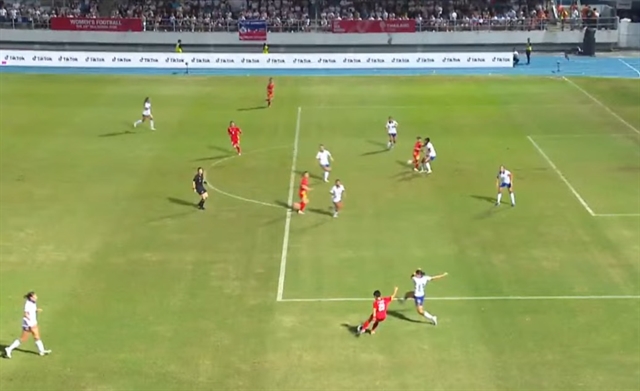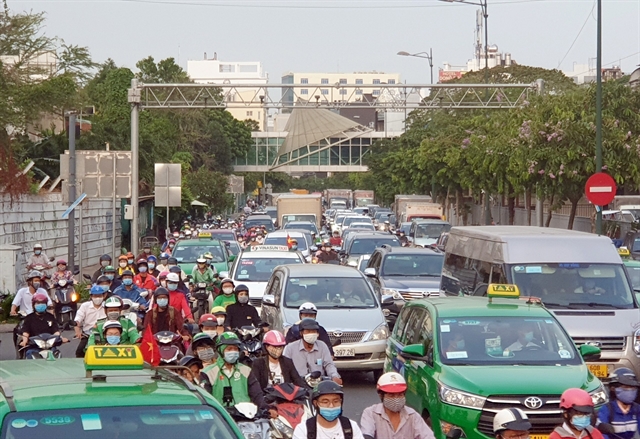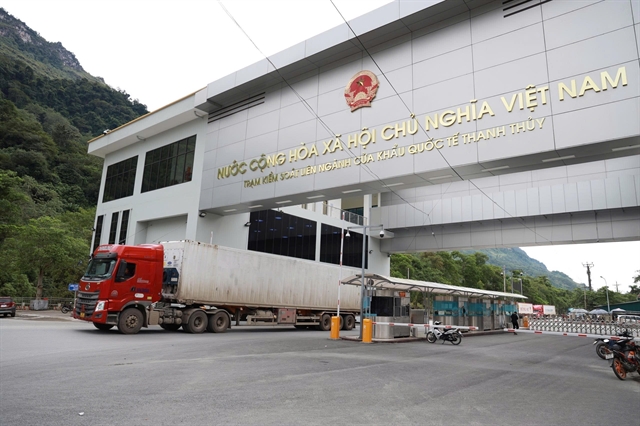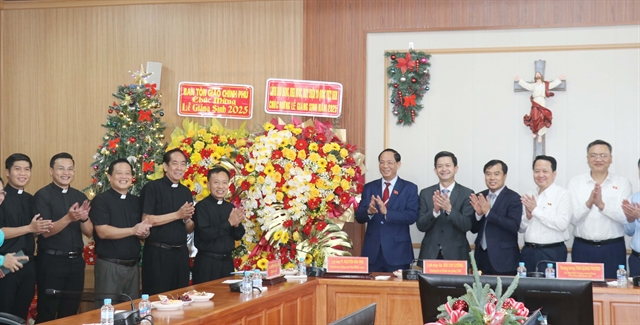 Environment
Environment

HCM City has been piloting a free-of-charge motorbike emission test to remove old and poor quality vehicles from the roads, reducing emissions into the air and improving environmental quality. However, there have been some bumps in the road.

|
| Traffic jams on Bạch Đằng Road, Tân Bình District in HCM City. The high density of vehicles and motorbike emissions are believed to be among the main reasons for air pollution in the city. — VNA/VNS Photo Tiến Lực |
HCM CITY — HCM City has been piloting a free-of-charge motorbike emission test to remove old and poor quality vehicles from the roads, reducing emissions into the air and improving environmental quality. However, there have been some bumps in the road.
The plan has not been well received by people and still lacks legal regulations.
The city has more than 7.6 million motorbikes, and nearly 68 per cent of them have been on the roads for more than 10 years, said the HCM City Department of Transport (DOT).
The total amount of carbon monoxide (CO) and hydrocarbon (HC), which are harmful to people’s health, released from motorbikes make up 90 per cent of total emissions released from motorised vehicles in the city.
It is calculated that if the city can control motorbike emission, it can reduce the amount of CO by 13 per cent, which equals 56,000 tonnes, and nearly 14 per cent of HC, which equals 5,000 tonnes.
Between May and September, the municipal DOT launched a pilot programme checking motorbike emissions.
Over the five-month period, nearly 11,000 motorbikes were checked. Most of them did not reach the required emission levels after five years of use.
With the pilot programme’s results, the researcher team sent a plan to supervise motorbike emissions to the municipal People’s Committee. The plan aims at checking the emission based on areas and years of use, first in the city centre and then expanded to the whole city.
Solutions to control motorcycle emission include periodic inspections and maintenance of motorbikes, discarding old, outdated motorbikes that do not meet environmental protection standards and supporting people to change their means of transport.
But according to Bùi Hòa An, deputy director of the HCM DOT, implementation of motorcycle emission testing faced many difficulties, due to the lack of specific legal framework.
The plan needs to be approved by the Government for widespread control. And the standards, inspection schedule, management method, rate and fee collection ways must also be specific.
Another important part is violation punishment, as well as the duties and rights of motorcycle emission control units, which must be fully regulated. Only when there is enough legal framework can the city implement it.
Lawyer Trần Đình Dũng from the HCM Bar Association said that the Government only stipulated expiration dates and periodical inspection for coaches and trucks, and did not include motorbikes. There are not any specific statistics on the state of old cars nationwide.
The Law on Road Traffic 2008 has regulations to ensure technical safety for vehicles in circulation, but it does not specify the need to check motorcycle emissions.
Dũng added that the term “old car” did not officially exist in the relevant laws. If people want to assess the status of a vehicle, they must go to a reputable inspection agency, which is the Việt Nam Register.
Another important issue is how to get people’s consent when carrying out motorcycle inspections.
Currently, HCM City has millions of people using motorbikes as their means of livelihood, especially poor people who can only use old motorbikes. If measures are imposed immediately to inspect and recover old vehicles, it will have a massive, negative impact on people's lives.
Dũng said that motorbikes were citizens’ property and withdrawing that was not in accordance with the Constitution. Even with expired cars, the law only stipulates that the police agency can revoke registration certificates and number plates. The car owner has the right to keep the car for display as a souvenir or to sell scrap. The authorities cannot recover the car.
Lawyer Dũng believes that if the plan to control motorcycle emissions in HCM City is to be implemented, it must be done step by step with a specific roadmap, considering many factors.
Associate professor Hồ Quốc Bằng, from the Environment and Natural Resources Institute under the HCM City National University, said because the country had no regulation on motorbikes’ expiration date, to carry out inspections on motorcycle emissions and recover old ones, the State needed to build a solid legal system with regulations on motorcycle emissions.
Vehicles that do not meet emission standards can be stopped from circulation. Residents are responsible for maintaining and upgrading to meet emission standards.
If the vehicle is old, but still can be used if well repaired, the State should have regulations for maintenance. If the vehicle is too old and cannot be repaired, people should dispose of it themselves.
On the other hand, the State also needs to have a reasonable financial support policy for owners of the recalled motorbikes, such as a discount on a new one or an interest-free loan so as not to affect people's lives, especially the poor.
In addition, the State can support manufacturers to recover old vehicles and exchange new motorbikes for people.
Associate professor Nguyễn Lê Ninh, a former member of the Executive Committee of the HCM City Union of Science and Technology Associations, said that while waiting for legal regulations on controlling and inspecting motorcycle emission, the city should actively research and develop specific plans for handling old motorbikes, especially workforces and yard space to store a large number of vehicles.
If possible, the State should consider assigning motorbike businesses to self-recover and handle their own vehicles to save costs.
The city should manage motorbikes based on emission instead of on years of use because in fact, many good quality motorbikes are used beyond the expiry date but are not harmful to the environment. On the contrary, some others have just been bought and used for a short time but have poor production quality and exhaust emissions that exceed the prescribed level, and so should still be banned from circulation.
The HCM City DOT has proposed the municipal People’s Committee issue a legal framework for controlling motorbike emissions, and proposed the Ministry of Transport have a plan for amending the Law on Road Traffic.
In the short term, the DOT planned to inspect motorbikes that were used for more than five years, and then gradually check all.
The plan is divided into four stages. The first one is to build 88 testing stations and data storage systems with a fee of VNĐ50,000 (US$2.1) per vehicle per year.
The city will give free-of-charge emission checks to poor people and a policy to support people in replacing old vehicles.
After that, it will start zoning areas based on emission standards.
The next phase expands to build 78 more stations, covering the whole city. The project implementation budget until 2030 is VNĐ553 billion ($24 million). — VNS




